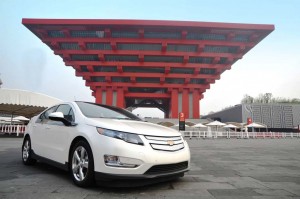It was a good year for the U.S. auto industry – more or less. After a late-in-the-year burst of activity, sales topped 11 million for 2010, but that’s still a far cry from the 17 million numbers posted a decade ago.
It also meant that China would again retain the title as the world’s largest automotive market. And with sales in the Asian nation still growing at a double-digit rate, it’s hard to find a single maker that didn’t set another record, from Ferrari to Ford to General Motors.
GM has now cemented its lead, boosting sales for the year by 29%, to 2.35 million. In October, GM became the first maker to ever sell more than 2 million cars in a single year in China.
But there’s a downside to that news. The General actually saw its momentum slip for the year, after scoring a whopping 67% increase in sales in 2009. Kevin Wale, president of GM’s Chinese subsidiary, expects to still see growth in 2011, but at a more tepid 11% pace.
That reflects a variety of factors including the Beijing government’s decision to let a number of automotive subsidies end. The sales tax on small vehicles has been increased from 7.5% to 10%. And there are moves underway that could substantial curb sales in crowded big cities.
In Beijing, for example, the government is getting ready to institute a new lottery that would limit, at 20,000, the number of new license plates it will issue each month. That approach is designed to help curb the worsening traffic situation, as well as the city’s endemic problem with smog.
But while the growth of the automobile market may be pared back along China’s increasingly affluent Pacific coast, the country is beginning to see demand for personal transportation spread into the interior, which has only begun to feel the benefits of the nation’s rapid economic growth.
For 2011 and 2012, General Motors plans to launch 12 new models in China. That includes the new Baojuan 630, which will mark the debut of an all-new distribution channel it has created as a joint venture with Chinese-based partners SAIC and Wuling. Meaning “treasured horse,” in Chinese, the Baojuan brand is targeted at first-time buyers in China’s second- and third-tier cities. Considering there are 200 cities in the country with populations of more than 1 million, the potential market is considered substantial.
(For more on Baojuan, Click Here.)
For 2010, GM’s original Chinese venture, a partnership with SAIC, saw demand for products like the Buick Regal grow 42%, to 1.03 million. The other existing joint venture, with SAIC and Wuling, gained 16% for the year, to reach 1.23 million.
GM remains in a tough battle with Volkswagen for dominance of the Chinese market. Other players, including Ford, Toyota and Fiat, are gaining volume but still lag significantly behind. Analysts say some of the strongest contenders could be local brands, including not only Geely but Shanghai-based SAIC, which hopes to become a major player in its own right, separately from GM.

